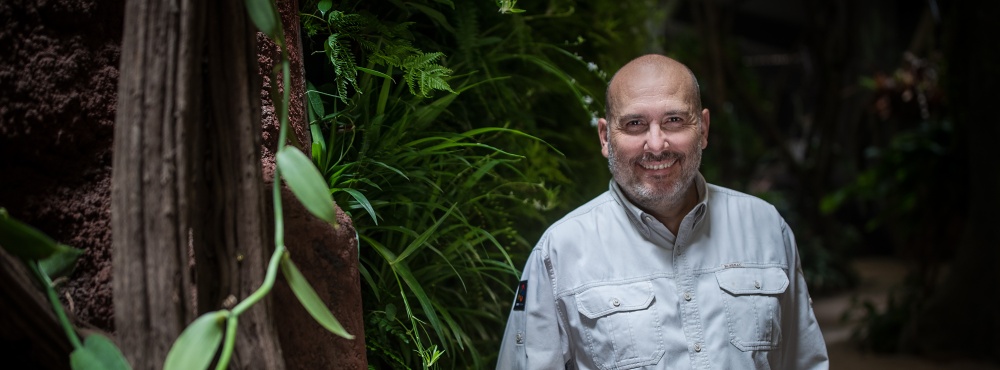A Mystery in Melchior Goldast's Diary

At first it reminded me a bit of the tale The Fall of the Votický Family in Karel Čapek's Tales from Two Pockets. In it, Dr. Mejzlik, a police officer, is visited by Mr. Divíšek, an archivist, who asks him to help him with his work on the reign of King George of Poděbrady; specifically, the sinister goings on at Votica Velenova in the summer of 1465. After investing considerable effort, Dr. Mejzlík does solve the intricate mystery quite fully – but when he later receives Divíšek's file, he finds just a brief, nondescript reference to it on page 471.
 Seriema, foto: Miroslav Bobek, Zoo Praha
Seriema, foto: Miroslav Bobek, Zoo Praha
Similarly, to Mr Divíšek contacting Dr Mejzlík, just before Christmas I too was contacted by Z. H.
“I am a lecturer in history at the Faculty of Philosophy of Charles University and one of my professional interests is the reign of Rudolf II and Prague at that time,” he wrote to me in his email. “At the last conference of the Prague City Archives, which was organized in cooperation with your zoo, I presented a paper on the menagerie of Rudolf II at Prague Castle. The testimonies of foreign visitors to Prague were an important source for me. One of them, Melchior Goldast from Haiminsfeld, who visited Prague just a few days after the emperor passed away, at the beginning of March 1612, left a very detailed testimony about the Imperial menagerie and aviary. While the interpretation of 'large' animals does not pose too much of a problem, as a complete layman in ornithology, the birds are much more difficult for me.”
The pertinent parts of Goldast's diary in the original and their translation into Czech had been attached.
I must say that I accepted the request of the esteemed historian with enthusiasm and immediately got my fellow ornithologists working on the solution. It wasn’t too difficult to determine most of the birds described, for example, Goldast writes:
“In the aviary there are two Visacks or Schiergäns with beaks one cubit long. They are white in colour. Each can swallow a three-pound carp alive and whole. Their feed costs three thalers a week.”
A bird that looks like a goose (Schiergäns), has a long beak and can swallow a three-pound carp can only be a pelican. It was quite easy to identify some other species too. However, we got into a tight spot with one passage.
“There is also a laughing bird, and it is quite cheerful to see (observe) it, for its voice imitates that of a man naturally laughing aloud. And when it wants to cry out, it puts its head behind it on its back, and thus using its whole body it ejects the laughter out of its throat so powerfully that it turns around and around. It is in the habit of laughing not only when it is hungry, but also when it is called upon. For it knows the voice of its keeper and runs after her like a dog.”
A laughing bird? It could be the laughing dove, but it doesn't put its head on its back. What’s more, it was supposed to be a bird kept in a garden, so the greater prairie chicken was also in the offing. However, it did not meet the other criteria either. Then there was the laughing kookaburra from Australia, but this was rejected because Australia was not discovered until much later after the death of Rudolf II. Nevertheless, I will take the liberty of going off at a tangent here.
Although James Cook became the officially recognized discoverer of Australia after landing in Botany Bay in 1770, he was certainly not the first to see its shores. While Rudolf II was still alive, the Dutchman Willem Janszoon came within sight of its northern coast. But I write all this because King Henry (VII) of Germany had a cockatoo in his Sicilian court as early as the 13th century (!) – and a team led by Dr Heather Dalton has recently attempted to prove, using images from the time, that it was a species found only in Australia and New Guinea. That would be a real bombshell! Naturally, opponents have come up with compelling arguments that this determination is doubtful to say the least and have put forward other species. According to them, it could “simply” be a cockatoo imported from Southeast Asia.
Either way, the kookaburra cannot be entirely ruled out based on geographic and historical considerations. However, it too does not fit some parts of Goldast's description. I certainly can't imagine it running after its keeper like a dog.
In short, a mystery. A mystery that was solved by my colleague Antonín Vaidl. He came up with the idea that it could have been a seriema. If the name doesn’t ring a bell, then there are two species of seriema living in South America and they are so unlike any other bird that they belong to a separate order. They are relatively large, with long legs and an elongated neck, and - as Antonín emphasized – “they laugh, bow and are also easy to tame”. The entry in Goldast's diary fits a seriema perfectly. And if it is not a 100% solution to our mystery, it is certainly the most likely explanation at this point.
So, now all we must do is wait and see how Z. H. writes his thesis. Going by what I have learnt about him so far, it is certain that we will not end up like Čapek's Dr. Mejzlík.

Psáno pro MF Dnes
ZOOPRAHA.CZ
Contacts
- The Prague zoological garden
U Trojskeho zamku 120/3
171 00 Praha 7
Phone.: (+420) 296 112 230 (public relations department)
e-mail: zoopraha@zoopraha.cz
Others








